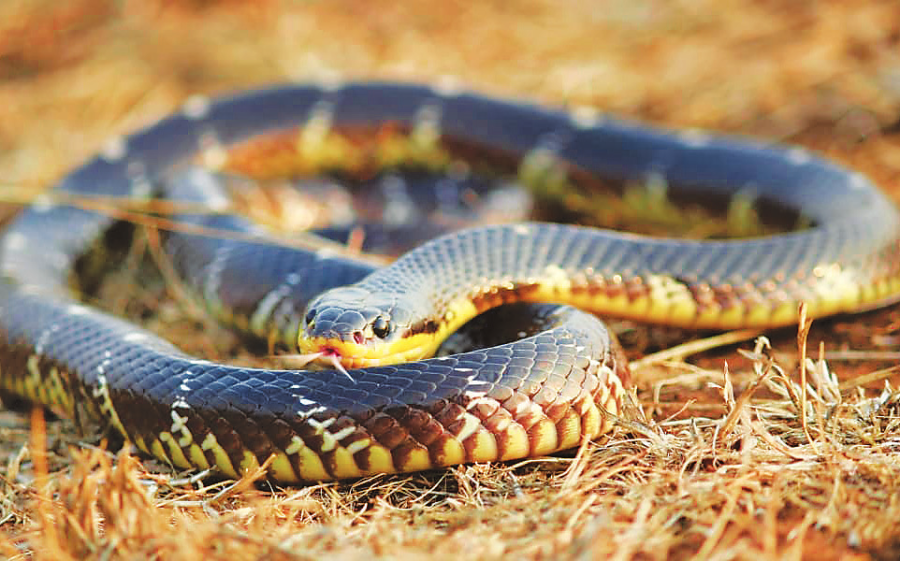National
Snakebite cases rise with monsoon around the corner
Study shows close to 3,000 people die from snakebite every year in Tarai alone, many before reaching a hospital.
Arjun Poudel
Over a dozen people have been admitted at Sukraraj Tropical and Infectious Disease Hospital on Saturday for the treatment of snake bites.
Of the victims, most are women and children who were bitten by the snake either while working in the field or playing in the open, according to the hospital administration.
“We have over a dozen people today who have been admitted to our hospital for treatment of snake bites,” said Nabaraj Gautam, information officer at the Sukraraj Hospital. “With the increase in rainfall, the number of people seeking treatment for snake bites have been rising.”
Incidents of snakebites and resulting deaths are common in Nepal, but the issue still remains grossly neglected and experts call it a lurking invisible crisis.
Each year, around 2,700 people, mostly children and women from Nepal’s Tarai region, die of snake bites, according to a March, 2022 report.
The report, titled ‘Snakebite epidemiology in humans and domestic animals across the Tarai region in Nepal: A multi-cluster random survey’, was prepared jointly by a cohort of international experts, including from Nepal’s BP Koirala Institute of Health Sciences, and published in The Lancet, a leading international medical journal.
The Sukraraj Hospital said that in the last one week, 34 people have been admitted at the hospital for treatment of snake bites.
Of them, 24 are female and seven male. Remaining three have been bitten by unknown insects but doctors at the hospital have been providing them with the treatment of snake bites.
“Women and children who have to work in the field and have to go to the jungle become victims of snake bite,” said Dr Shrawan Mandal of the Sukraraj Hospital.
“Small children are at risk of dying from snake bites, as they do not tell their parents about snake bite on time due to fear of getting scolded for playing in the bushes.”
People living in thatched-roof houses are also highly vulnerable to snakebite, as snakes visit such homes in search of rats.
Experts say awareness drives should be launched to keep the house and surroundings clean, prevent children from playing in the bush and avoid walking during night time and use torch light while walking in the dark.
“Those residing in the Tarai region should use a mosquito net while sleeping, which not only protects from mosquito bites but also from snakes,” said Dr Sanjib Kumar Sharma, a snakebite expert and one the authors of the report. “One should rush to the health facilities immediately if bitten by a snake.”
Neglected tropical diseases are often linked with land mines, as both land mines and tropical diseases disproportionately affect children, women and poor people.
Studies show a lot of snakebite victims die before reaching hospitals.
While health facilities are ill-equipped and short of anti-snake venom, there is also a lack of awareness among many people in rural areas who often visit shamans instead of a physician seeking treatment for snakebite.
Doctors say the conservative belief of consulting shamans instead of going to health facilities at the earliest is the primary reason for many snakebite deaths.
Moreover, due to poor infrastructure at health care facilities—including a lack of doctors, anti-snake venoms, ventilators, and kidney dialysis equipment—hundreds of people are dying of snakebite every year.
The World Health Organisation has added snakebite envenoming to the list of neglected tropical diseases highlighting the need for stronger epidemiological evidence in endemic countries such as Nepal.
Health Ministry officials said that they are aware of the goal of reducing snake bite incidents and deaths by 2030 and have been focussing on strengthening health care services and launching awareness drives about the risks.




 8.12°C Kathmandu
8.12°C Kathmandu















